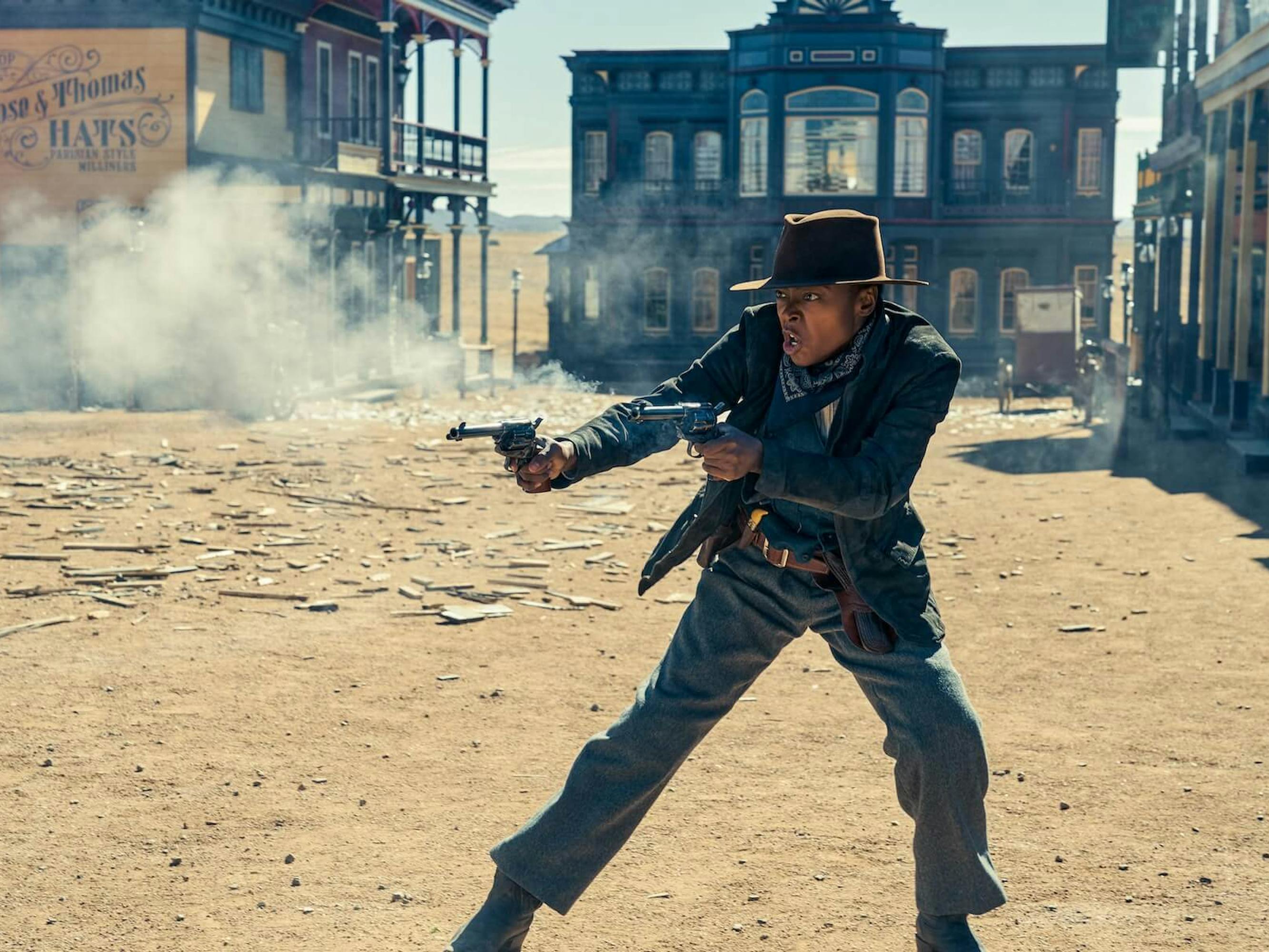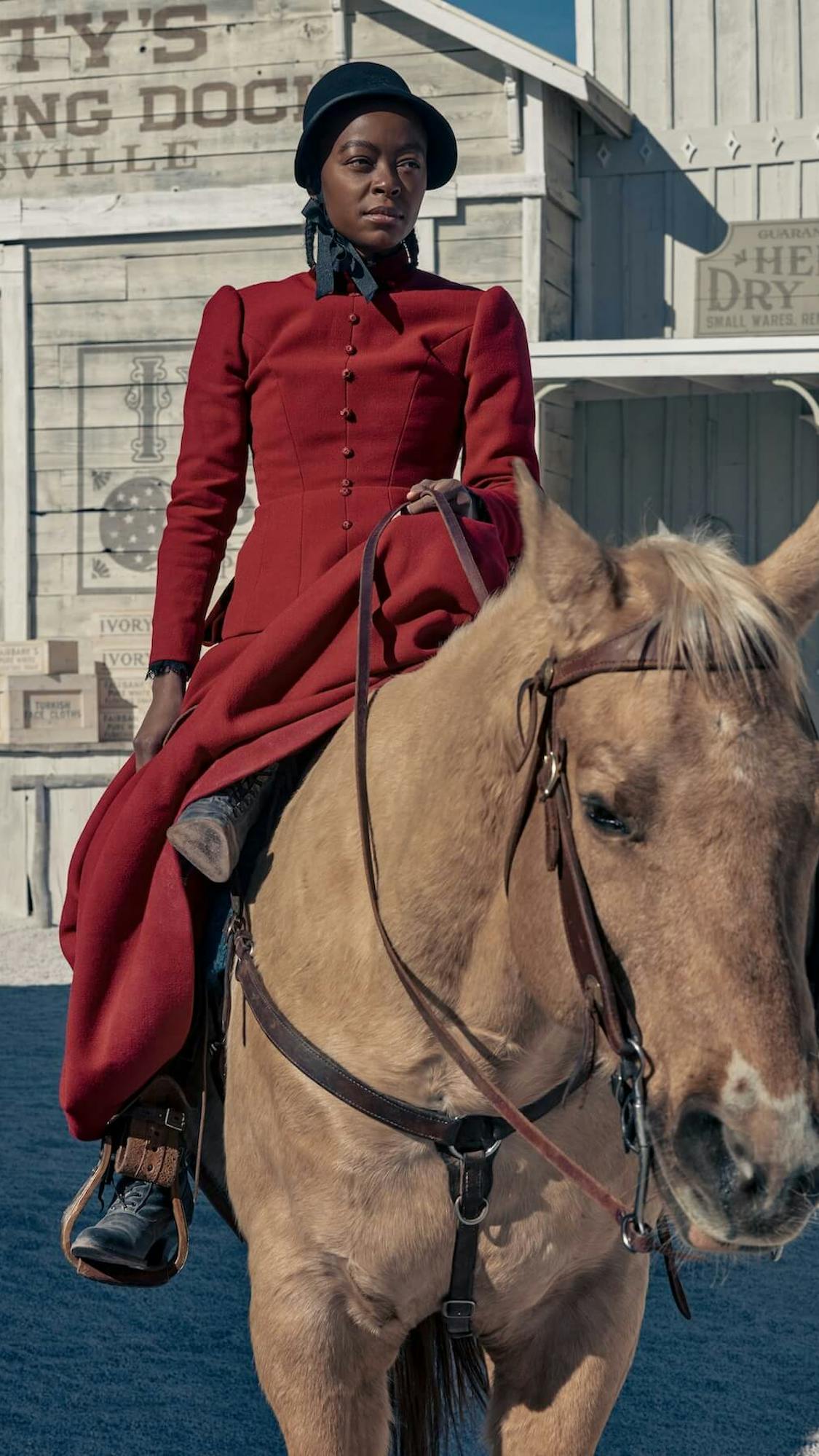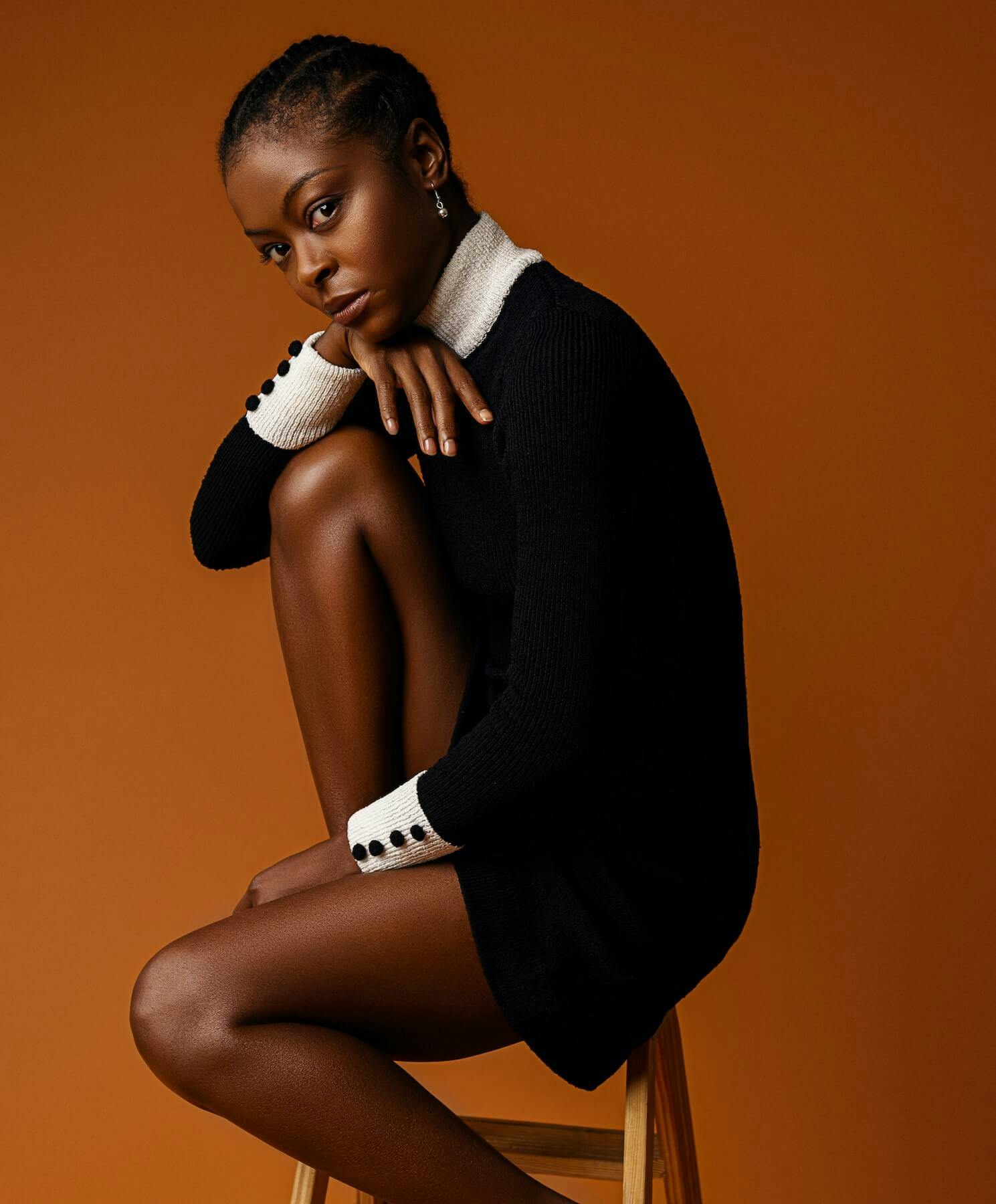The actor straddles gender norms in The Harder They Fall.
The Westerns of old would have you believe the frontier was settled solely by a group of gruff cis white men with helpless Maureen O’Haras chasing at their heels. Jeymes Samuel’s The Harder They Fall rebukes that tradition and underlines one thing from the outset: Black people more than existed in the Wild West — they thrived. With its roster of diverse historical figures, the film also serves as a document of the ways in which African American men and women contributed to the advancement of America.
Alongside an ensemble cast that features Jonathan Majors as Nat Love, Idris Elba as Rufus Buck, and Regina King as Trudy Smith, Danielle Deadwyler portrays Cuffee, based on Cathay Williams, the only woman known to have served in the American Indian Wars, and the first Black woman to enlist in the Army. Archives detail how Williams pulled this off: Taking advantage of the lawlessness of the West, she enlisted by posing as a man. Williams’s page in history is a reminder of the varied and dynamic impact that Black women had on early America. Some were slaves, or former ones, who stole away to the western landscape with hopes of untold freedom and opportunity. Others were outlaws. And some, like Cuffee came to be, were the law.
As the right-hand of Stagecoach Mary, played by Zazie Beetz, and a member of Nat Love’s gang, Cuffee epitomizes the West: unflinching, independent, and rugged. To play her, Deadwyler learned to ride a horse and drive an actual honest-to-God stagecoach, relying on her lifelong training as a performance artist and tae kwon do expert. “I’m a purple belt and was a national champion when I was 12 years old,” she tossed out casually in our interview, in which she also spoke about what it was like to step into the boots and spurs of a remarkable gunslinger.

Alexandria Portée: Cuffee is based on a real woman, Cathay Williams, who became a soldier long before modern discussions of gender roles and gender fluidity. How did you mentally prepare to channel her reality?
Danielle Deadwyler: It’s not a mental preparation, it’s just wanting to be fully aware of the dynamic of the environment you’re considering. So I think you have to be super informed about the historical context: That was me digging into the Black trans history texts, recalling all of the information about Cathay Williams from the research that I’d done, and synthesizing all of that into this body that has played young boys before for theater or all kinds of other projects. So it’s taking all of that experience and manifesting it into the character.
What did you want the audience to take away from Cuffee’s story?
DD: I think Jeymes and everyone from the cast have really reiterated how important it is to know that Black people existed in these spaces. I think that’s just as valuable in thinking about Black women in the West, in thinking about the multitude of manners in which they moved through the world. There’s something to knowing Stagecoach Mary was just zipping across the country in this mail carrier capacity. It’s important to know that Cuffee was going up and down the East Coast as a soldier and that her life and her contributions were significant. And yet we fail to remember these women’s stories in the way that we should. It’s not an anomaly that Black people now are doing things. It’s a history, a legacy, of pushing the boundaries and always being where you don’t think we are. And it’s not just this one group of Black people — the pattern is huge. It’s important that we continue to show all kinds of people of color and all kinds of people.
How did your experiences with performance art and dance enhance your acting practice and craft on stage, especially when it came to the boxing and fighting scenes?
DD: It’s just about choreography and endurance — choreography with regard to dance, endurance with regard to performance art. That’s the stuff that I do. That’s what my body has been trained to do. I’ve done martial arts for a significant amount of my childhood and some of my adulthood and it doesn’t hurt to have that experience. It doesn’t hurt to be able to access certain qualities of your body, your musculature. There’s a rhythm to the fighting scenes that is purely fueled by performance art, where you’re testing the dynamic of your body and your mind, along with that of the audience and what they are witnessing of you.

Throughout the film, Cuffee proves to be one of the characters that’s a bit more self-serious than the others, but she has a surprising moment of physical comedy when she goes with Nat Love to rob the bank. How did you balance the comedy with the dramatic elements?
DD: That’s the beauty of comedy, right? It’s going to do what it does. It’s like, oh, she’s defined herself as this hard-ass ballbuster in the bar. She’s defined herself as somebody who’s willing to buck at all of these cats in the gang. And then, the one thing she has to do is put on a dress. Ugh, God.
You’ve been free in the way that you presented yourself in these pants, and with guns, all this time. And now you’ve got to make [your character] be the antithesis of what they’ve purported themselves to be. That’s the beauty of comedy. It’s the contrast. So I just lived in it. You don’t have to try hard.
You take Cuffee to a vulnerable place in the horseriding scene when the skirt she’s wearing is throwing her off her game. How has expressing resistance to gender norms been important to you?
DD: It’s important because it makes us break down the boundaries of who and what operates in certain spaces. I mean, specifically for me, in thinking about the labor dynamics and what I explore in my own personal performance art work: If I’m considering the work that we do and the value of it, then I’m questioning whether I should be doing it. Should I navigate the labor of my body the way that I do? I think that’s just important in general, right? We’re in a critical moment where heads are butting because people don’t want to be bound anymore. When it comes to gender, you’re bringing the center to you. You’re saying, I choose not to adhere to the way somebody else is defining me. I am much more expansive than that. I can push the enclosures away. I think that’s what gender pushing does: It just makes life greater, literally.
How did Cuffee carry herself on set, even between takes?
DD: Well, it’s in your body at that point. The masculinity of the time has a distance, a gruffness; it’s not stiff, but it’s just a readiness. It’s a particular kind of stance. That kind of thing just gets into your D.N.A. when you’re out there. When you’re around the cast and crew, when you’re in the wardrobe, you can’t sit how you would at home with some marshmallows at the fire. You got to sit the way you do when you got 50 million layers of clothing on. And you got on boots. And you got on a vest. And you got on a coat. And you got on a shirt. And you got on undergarments and whatnot, a full-bodied undergarment. That’s the kind of thing that forces you to become who you are at all times. That’s the way this was. The beauty of the environment, and the way Antoinette Messam designed our costumes — you’re in the life. You got guns on your body. You feel like you’re weighted [down] with the West on you. You’re the West all the time.

At the end of the film, Stagecoach Mary and Cuffee have a significant goodbye. It seems to say a lot about what they had during their time at the saloon. How would you describe their relationship?
DD: It’s the love between two women who’ve been through some stuff. It’s the rich, visceral amicability between two women. They’ve probably done some wild shit together. I imagine Cuffee knows all of Stagecoach Mary’s secrets. She knows a lot about what happened between her and Nat Love. She knows a lot about how the bar works. She knows a bunch of folks who Mary has fucked up and they fucked some people up together. That’s stuff that you don’t necessarily see about women at that time. So to find somebody who, in this world, is willing to step the way you are, that’s a hard thing to let go. And that’s what that moment is.
One last question. Who was the quickest draw on set?
DD: Me! It’s probably RJ Cyler. It’s definitely RJ. I’d say Jonathan’s a close second. RJ’s pretty damn fast. He’s remarkable in all of that weaponry; he handled that with rhythm and class.
